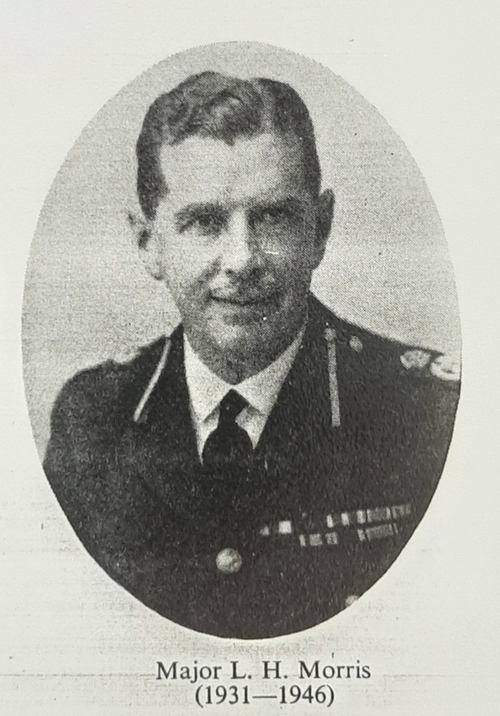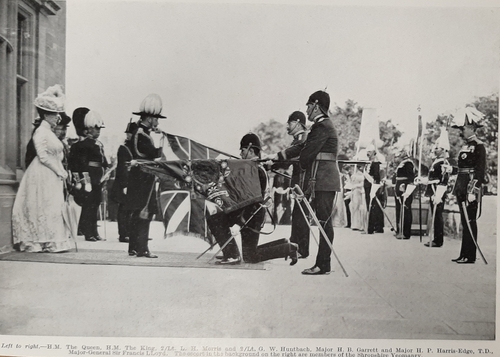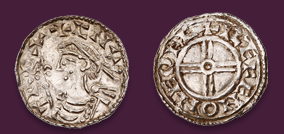Auction: 25002 - Orders, Decorations and Medals
Lot: 124
The superb 'Civil Defence 1944' C.B.E., 1935 K. St. J., 'Battalion Commander's 1919' M.C., group of eleven awarded to Lieutenant-Colonel L. H. Morris, Shropshire Light Infantry, later Chief Constable, Devon Constabulary
The Most Excellent Order of the British Empire, Commander's (C.B.E.) neck Badge, Civil Division, silver-gilt and enamel; The Order of St. John of Jerusalem, Knight of Grace, (K. St. J.) neck Badge, silver and enamel; Military Cross, G.V.R., unnamed as issued; The Order of St John of Jerusalem, Officer's (O. St. J.) breast Badge, silver and enamel; King's Police Medal, G.VI.R., for Distinguished Service (Mjr Lyndon H. Morris. M.C. Ch. Const. Devon Constab.); British War and Victory Medals (Lt. Col. L. H. Morris.); Terriorial Force War Medal (Capt. L. H. Morris. Shrops.L.I.); Defence Medal 1939-45; Jubilee 1935 (Major L. H. Morris MC DL Chief Cons of Devon), naming engraved; Coronation 1937; the first, second and ninth loose, the rest mounted court-style as worn, sometime lacquered, overall good very fine (11)
Purchased January 1990.
C.B.E. London Gazette 8 June 1944.
K. St. J. London Gazette 28 June 1946.
M.C. London Gazette 8 March 1919, the original citation states:
'He commanded his battalion during the attacks of 18th to 24th Sept, 1918, near Fresnoy, and showed coolness and judgment in dealing with situations. When the attack was held up he went forward, under machine gun and shell fire, to reconnoitre, and by his presence inspired the men with confidence. The battalion eventually not only gained its objective, but also assisted the brigade on its left to reach its objective.'
K.P.M. London Gazette 2 January 1939.
Lyndon Henry Morris was born at Bakewell, Derbyshire on 20 January 1889, the son of Canon E. Morris of Ashborne. Educated at Bromsgrove School (1900-1907) he excelled there becoming 2nd Head of School and Captain of Fives before qualifying as a Lawyer with the firm Sprott and Morris from 1907-1912.
Commissioned 2nd Lieutenant with the Territorial Force he served with 4th Battalion, Shropshire Light Infantry from 1 January 1910. Further advanced Lieutenant on 4 June 1911 Morris had the honour of carrying the Colour at Presentation of the Colours to King George V at Bangor University on 14 July 1911. Further advanced Captain on 25 June 1914 he was commanding 'A' (Shrewsbury) Company when they were mobilised on 5 August.
The Battalion was initially not earmarked for a combat role but rather intended to replace Regular Battalions in colonial postings and as such they embarked on 29 October 1914 for India. From there the unit was sent to Burma where they settled at Rangoon into what seemed an unremarkable posting. However they were soon disabused of this notion when on 21 January 1915 the C.O. was informed that one of the native regiments was on the verge of mutiny.
The Battalion was swiftly mobilised, providing a guard for government house they surrounded the three forts detachments of the mutineers were guarding along with their barracks and disarmed the entire unit. The situation was dealt with swiftly and efficiently, seeing a potentially explosive situation defused without incident. The next time they were not to be so lucky as orders were received for them to proceed swiftly to Singapore to deal with another mutiny, this one in full swing.
The 5th Light Infantry had mutinied on 15 February over rumours that they were going to be sent to fight their co-religionists in the Ottoman Empire. They scattered the other garrison troops and killed several officers and civilians, they were engaged by a few officers and men of the Malay Volunteer Rifles before being confronted by landing parties from Allied ships in the harbour. The mutineers were largely beaten by the time the Battalion arrived however their services were still needed in hunting those still at large. The History of the 4th Bm. K.S.L.I. (T.A.) gives further detail, stating:
'The Battalion's main task during the next few weeks was rounding up the small parties of mutineers who still roamed the island. The dense jungles of Singapore Island had to be combed and all native villages searched. After an arduous week or two, the Battalion brought many of the rebels back to stand their trial for murder and mutiny. Others surrendered to the native police as the search for them narrowed down. The great majority of those brought to trail were sentenced to be shot.'
After this grim task was completed Morris was ordered to Hong Kong for further garrison duty however this was to be his last posting with the 4th Battalion as he applied to join the Regular Army and undertake a frontline role which he did on 24 September 1916. Arriving in France in February 1917 he was posted to Command 'B' Company, 1st Battalion.
In this way Morris went into action at the First Battle of Cambrai, The King's Shropshire Light Infantry refers to the action fought on 20 November 1917, stating:
'At 7.10 the third wave, consisting of the remaining companies of the Buffs one the right, and K.S.L.I. on the left, continued the advance and reached the final objective - the Hindenburg support line. Captain Whitmore, commanding D Company, was killed and Captain L. H. Morris, commanding B Company, and 2nd Lieut. Symonds, A Company, were wounded.'
Morris received a bullet wound to his right hip, a report on his conduct written by the Battalion Commander, Lieutenant-Colonel C. F. B. Winterscale states:
'During the recent operations this officer displayed great skill and marked ability in the preliminary stages of the attack, and led his men with the utmost dash and determination until he as unfortunately wounded before reaching the final objective.'
Returning to the Battalion in August 1918 he was promoted Major on 9 August, continuing to serve until after the Second Battle of Cambrai when Lieutenant Colonel Meynell left to take command of 171st Brigade. As the senior Major Morris took command of Battalion on 9 October 1918, taking them into action at the Battle of the Selle on 17 October. They attacked the southeastern corner of Busigny Wood and captured their position with losses of around 25 percent, largely the result of a gas attack. Their final major attack was on 24 October with heavy machine gun fire and a mistimed artillery barrage resulting in limited success, that same day Morris was appointed Lieutenant-Colonel. The Battalion was stationed at Bohain when the war ended and Morris remained in service, reverting to Major on 9 January 1920.
Resigning his commission on 6 June 1921 he briefly joined the reserve Battalion again before joining the Prison Service in 1923. Appointed Deputy Governor of Dartmoor Prison in 1926 it was as a result of this last service that Morris was appointed Chief Constable of Devonshire 1931.
His was a difficult start to the role as only the next year there was a major riot in Dartmoor, named the Dartmoor Mutiny. The prisoners had equipped themselves with homemade weapons and it was only by luck that the violence did not result in a fatality. Morris attended the mutiny with a large contingent of Police and his reputation in the prison was high enough that his appearance is credited with helping to calm the situation.
That same year he was appointed Deputy Lieutenant in 1932 and continued to serve with the Police. He was serving in this role during the 1935 Jubilee, earning his medal as the Chief of the Devon Constabulary. The outbreak of the Second World War saw Morris take on the responsibility of County A.R.P. Controller, in which capacity he was awarded his C.B.E. in 1944. One of Morris' main innovations while running the Devon Constabulary was to ensure improved communication to rural officers and improving the houses the officers were accommodated in. Morris died not long after the end of the war on 7 December 1946. Out of the Blue: A History of the Devon Constabulary by Walter J Hutchings gives the following obituary:
'On the 7th November 1946, the force learned with deep and sincere regret of the death of their chief.
Major Morris had been our chief for 15 years and during that time had aimed at the attainment of maximum efficiency. He looked ahead and on all matters adopted a long-term policy. He laid sound foundations and the force watch a gradual build-up taking place in all departments and in all directions. Reorganisation took place in many places and in many branches; new methods were adopted; better training systems were introduced; men were trained for specialised work, and new and more modern equipment was acquired. But in his quest for efficiency he kept well to the fore his conviction that, in the main, success depended on a happy and contented home-life for his men and their families. In all his efforts he gave priority to the living conditions and welfare of his men.'
Sold together with copied research.
Subject to 20% VAT on Buyer’s Premium. For more information please view Terms and Conditions for Buyers.
Sold for
£2,800
Starting price
£800









